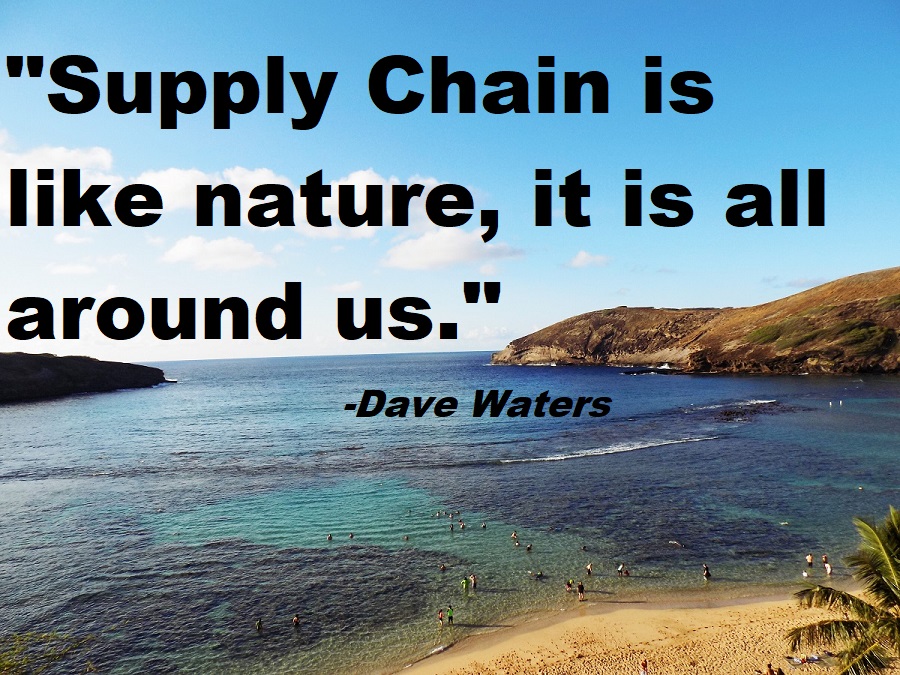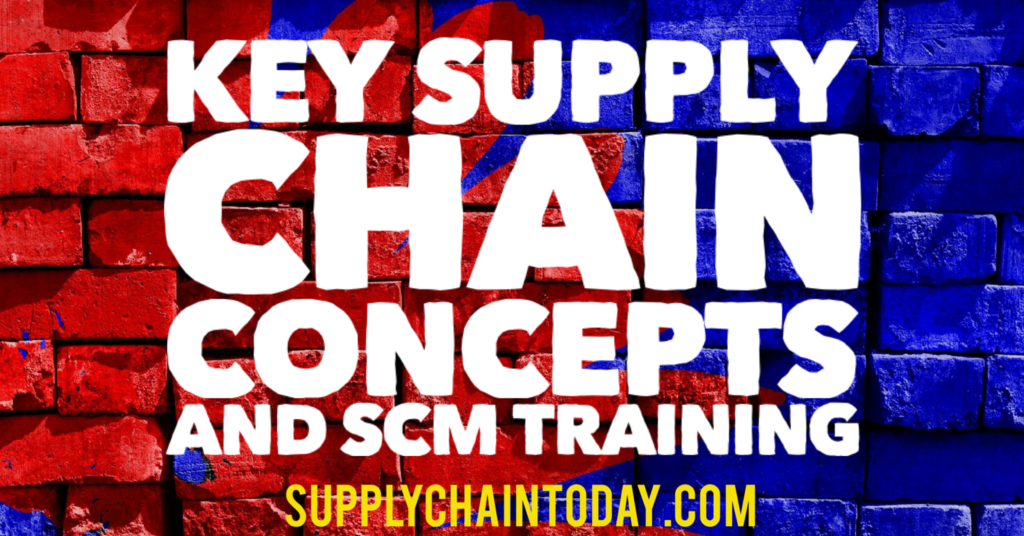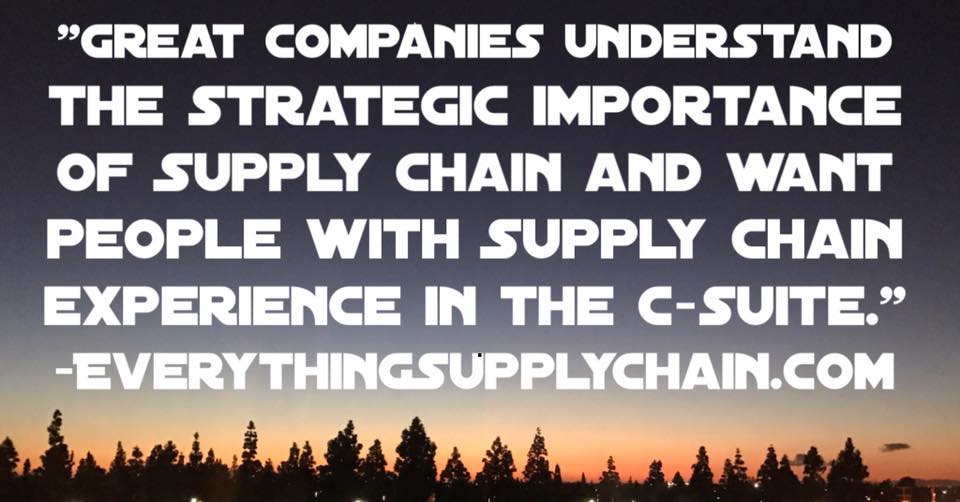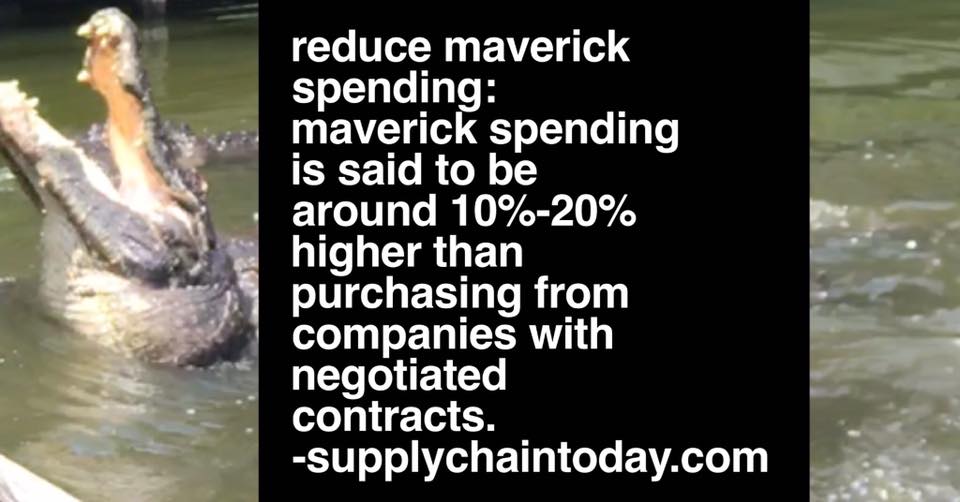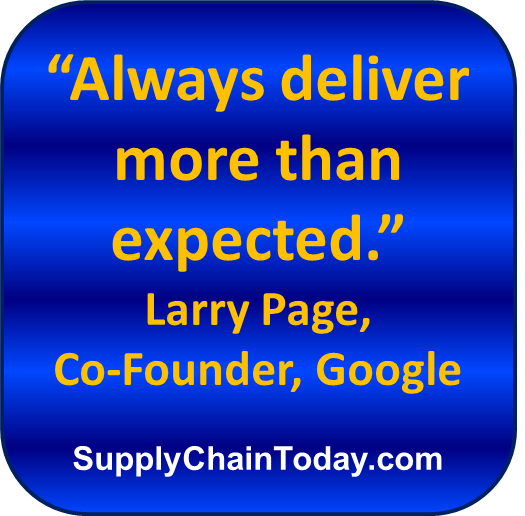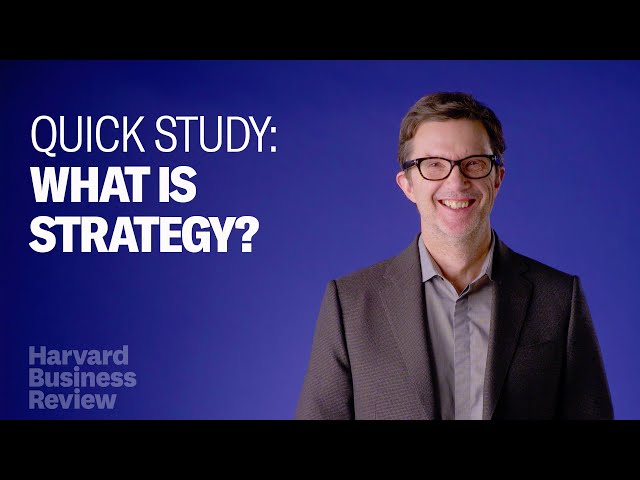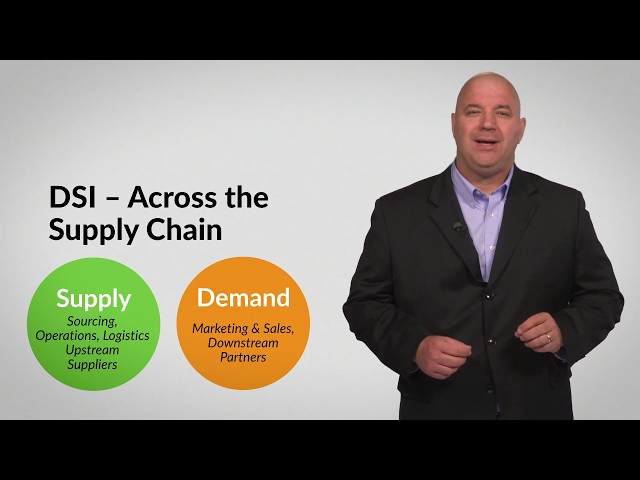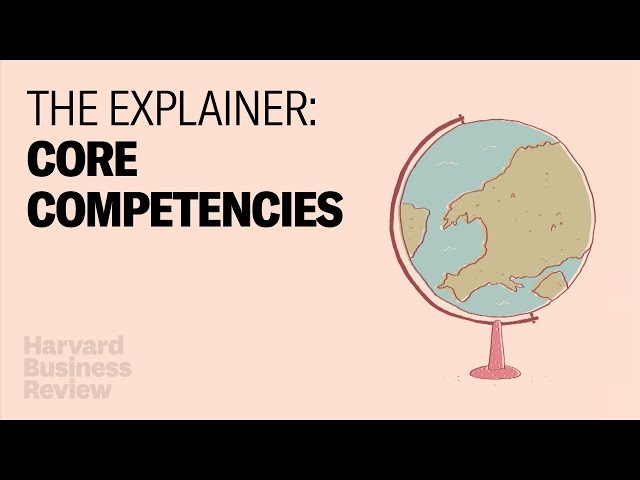Supply Chain Management Key Concepts.
This is an overview of supply chain management key concepts. We will start with the basics and then increase the complexity. Many of the terms you will find below are taught in top MBA supply chain programs. We made this overview so that whether you are new to supply chain or an experienced professional you can get something out of it. If you are new to supply chain it is going to take you longer to grasp the concepts. Be patient and watch the videos multiple times if needed. Start with the definitions below and go from there. There are a variety of definitions out there for supply chain so listed a few below. If you are an experienced supply chain professional jump right in and start watch the videos.
Supply Chain Defined
- The supply chain starts from the origin of the raw material and ends once the product has been discarded or recycled. It is getting the right product/service, to the right place, at the right time, at the right total cost.
- This is from Wikipedia: In commerce, a supply chain is a system of organizations, people, activities, information, and resources involved in supplying a product or service to a consumer. Supply chain activities involve the transformation of natural resources, raw materials, and components into a finished product that is delivered to the end customer.
- This is from Investopedia.com: Supply chain management is the management of the flow of goods and services and includes all processes that transform raw materials into final products. It involves the active streamlining of a business’s supply-side activities to maximize customer value and gain a competitive advantage in the marketplace.
- May hear supply chain described as this way as well: “cradle to grave” and “dirt to dirt.”
Supply Chain Overview by Topic
To jump right in the supply chain overview below starts off with a video providing a basic explanation of supply chain and then provides further detail based on your experience.
- Supply Chain Overview.
- SCM Resources by Topic & Supplier.
- SCM Top Companies.
- Get a Job in Supply Chain.
- What is Supply Chain Management?
To get more a more detailed look into the sections of SCM we broke it out. This way people can dive into areas of interest.
Train by Primary SCM Process
- Plan it: What is Supply Chain Planning and Strategy?
- Buy it: What is Supplier Management and Procurement?
- Store it: What is Distribution, Warehouse and Inventory Management?
- Make it: What is Manufacturing?
- Ship it: What is Transportation, Logistics and Shipping?
- Return it: What is Return and Reverse Logistics?
Strategy and Supply Chain Key Concepts
- ABC Analysis divides inventory into three categories—”A products” with very tight control and accurate records, “B products” with less tightly controlled and good records, and “C products” with the simplest controls possible and minimal records. To explore further here is ABC Analysis in Inventory Management.
- Balanced Scorecard: The Balanced Scorecard – Simple explanation.
- Beer Game: This is probably not what you are thinking. The beer game outlines the importance of information sharing, supply chain management and collaboration throughout s supply chain process. The Beer Game Explained.
- Blockchain: Instead of giving a definition of blockchain will provide an example used in supply chain. Blockchain technology is being used to allow retailers and consumers to track food products from their origins to stores and restaurants to be sure there is no issues that contaminate the food. To explore further here is Blockchain Training.
- Blue Ocean Strategy will help make strategic moves to create new value for the company by creating new demand. Much more can be found here: What is Blue Ocean Strategy?
- Bullwhip effect: Unexpected changes in demand patterns will continue to escalate further up the supply chain. Problems tend to escalate in supply chains where communication is minimal between supply nodes. A small wave in the middle of the ocean may end up as a tidal wave near the shore. For further details here is the Bullwhip Effect and Sudden Demand Increases.
- Continuous Improvement (Lean, Kaizen, Six Sigma, TPS, Agile…): Continuous improvement includes many tools and philosophies. This is an aggregation of philosophies for Continuous Improvement Training.
- Core Competencies: Finding Your Company’s Core Competencies.
- Cost Management: analyzing the costs of purchased goods in order to develop strategies to lower costs while improving supplier relationships.
- Demand Management is a planning methodology used to forecast, plan and manage the demand for products and services. For further details see The Strategic Role of Demand Management in Supply Chains.
- Design Thinking is focusing on the people the product/service is being created for, which will lead to a better designed product. Here is further information: What is Design Thinking?
- Gemba is a Japanese word meaning “the actual place.” Gemba is part of lean manufacturing. A gemba walk is going out on the floor and helping where you can. It is very similar to the concept of Management By Walking Around (MBWA) “When you are out observing on the gemba, do something to help them. if you do, people will come to expect that you can help them and will look forward to seeing you again on the gemba.” ~Taiichi Ohno. For more on this topic can start here: Gemba Walk – the Path to Continuous Improvement.
- Industry 4.0 is short for the fourth industrial revolution. Industry 4.0 is using smart technology to have machines talking to machines. Predictions are a focus in Industry 4.0 because with IoT everything is monitored and analyzed. For example, an autonomous fork lift will know when it needs to be serviced based on the analysis of its own system. Here is a basic video to qucikly understand Industry 4.0 – Explained Simply.
- Internet of Things (IoT) describes the network of physical objects (refrigerators, cars, phones, machinery…) that are embedded with sensors, software, and other technologies for the purpose of connecting and exchanging data with other devices and systems over the Internet. Here is a great deal of information on the topic: Internet of Things (IoT) Training.
- Inventory Management is the approach taken for managing raw material, work in process, and finished inventory. This is a good place to start the journey into Inventory Management?
- Just in Time (JIT) is a way to manage inventory by receiving product only when needed. This decreases inventory costs. Many people wonder why doesn’t everyone do JIT? It takes a great deal of discipline to do it right. Here is a great video to provide further detail: Just in Time by Toyota: The Smartest Production System in The World.
- Kanban is part of lean methodology. Work items are visualized on a Kanban board to give participants a view of progress. Work is pulled as capacity permits. May also want to look at the differences between Pull vs Push. Here is a minute video on the topic: Kanban explained in 60 seconds.
- KPI stands for Key Performance Indicators.
- Last Mile is a term used in supply chain and logistics to describe the movement from a the transportation hub to the final delivery. When a person receives product from Amazon they are at the end of the last mile.
- Lean Manufacturing this quote sums up lean “Make your workplace into showcase that can be understood by everyone at a glance. In terms of quality, it means to make the defects immediately apparent. In terms of quantity, it means that progress or delay, measured against the plan, and is made immediately apparent. When this is done, problems can be discovered immediately, and everyone can initiate improvement plans.” ~Taiichi Ohno: Here is further information on Lean Manufacturing – Pull Systems.
- Location Analysis for Distribution/Fulfillment Center.
- Min-Max Inventory: Min value is the order point when inventory is low, and Max is the inventory needed. The simple calculation of subtracting the Min quantity from the Max quantity is the reorder quantity. Here is a video for further detail: Min-Max Inventory Strategy.
- Optimize Work Flow: Cycle Time, Lead Time, Takt Time
- Outsourcing is when a company hires another company to be responsible for actions that could be done internally. Outsourcing the call center to India is an example. Here is a review of Pros and Cons of outsourcing.
- Pareto Principle: The simplest way to describe the Pareto Principle is the 80/20 rule. For example, 80% of a companies profits will generally come from 20% of the customers. Whether you call it the Pareto Principle or the 80/20 Rule here is more information on the topic: Pareto and 80/20.
- Postponement: Waiting as long as possible to put the finishing touches on a product. For example: HP would wait to put in its power cord until it knew if it was being sold in the US or abroad. For further detail on postponement strategy: Supply Chain Postponement Strategy.
- Porter’s Five Forces is a method for analyzing competition of a business. This video provides insight by the originator, Michael Porter of Harvard University: Porter’s Five Forces – Business Strategy and Execution.
- Purchasing Process is the way a company buys goods and/or services. The purchasing process can differ between companies but usually has the same components. For further detail: What is a purchasing process?
- Push vs Pull. Make to Order vs. Make to Stock. Manufacturing: Push vs Pull?
- Six Sigma is a set of techniques, tools and statistical analysis for process improvement. Here is a brief video for further explanation: Six Sigma in Plain English.
- Supplier Selection is the process to identify, rate, develop and do business with suppliers. For further information watch this video: Supplier Selection and Certification.
- SWOT Analysis is strengths, weaknesses, opportunities and threats. Find out What is SWOT?
- Theory of Constraints (TOC) is a management philosophy introduced in the book “The Goal” by Eliyahu M. Goldratt. There is always at least one constraint to be worked. Some people call it the “long pole in the tent.” A constraint is the primary driver sub-optimizing the system. Constraints can be internal or external to the system.
- The Goal is a book written in 1984 and a very easy read. When people talk about supply chain books this is at the top of the list. “This theory provided a persuasive solution for factories struggling with production delays and low revenues.” –Harvard Business Review. This is a book review on The Goal by Eliyahu M. Goldratt.
- Total Cost of Ownership (TCO) is the cost of the product starting from the initial planning stage to the ultimate disposal of the product.
- Value Chain is a set of actions a company performs to delivery a product. This is a concept by Michael Porter of Harvard University. For further information on this topic: Value Chain.
- Variability refers to the uncertainty in a supply chain. Reducing variability increases consistency which is critical for supply chain.
What is…
Quotes on Supply Chain and Related Topics
- Analytics and Big Data Quotes
- Automation Quotes by Top Minds
- Continuous Improvement Quotes
- Lean Manufacturing Quotes
- Quotes about the Toyota Production System
- Supply Chain Quotes
Business Strategy Concepts
What Is Strategy? It’s a Lot Simpler Than You Think.
The Strategic Role of Demand Management in Supply Chains
Finding Your Company’s Core Competencies
Supply Chain Quotes
- “There comes a time when you ought to start doing what you want. Take a job that you love. You will jump out of bed in the morning. I think you are out of your mind if you keep taking jobs that you don’t like because you think it will look good on your resume. Isn’t that a little like saving up sex for your old age?” ~ Warren Buffet
- “If you don’t understand how to run an efficient operation, new machinery will just give you new problems of operation and maintenance. The sure way to increase productivity is to better administrate man and machine.” ~W. Edwards Deming
- “A leader’s job is not to do the work for others, it’s to help others figure out how to do it themselves, to get things done, and to succeed beyond what they thought possible.” ~Simon Sinek
- “Leaders win through logistics. Vision, sure. Strategy, yes. But when you go to war, you need to have both toilet paper and bullets at the right place at the right time. In other words, you must win through superior logistics.” ~Tom Peters.
- “Supply chains are everywhere. From the biggest company in the world to running your household. We all have supply chain experience even if we don’t know it.” ~Dave Waters.
- “If supply chain had an arch enemy it would be called ‘bad communication’.” ~EverythingSupplyChain.com
- “Never continue in a job you don’t enjoy. If you’re happy in what you’re doing, you’ll like yourself, you’ll have inner peace. And if you have that, along with physical health, you will have had more success than you could possibly have imagined.” ~ Johnny Carson
“Supply Chain Management is like nature, it is all around us.” ~Dave Waters
